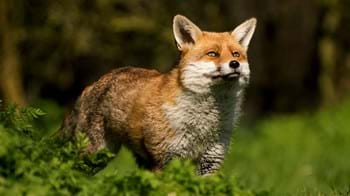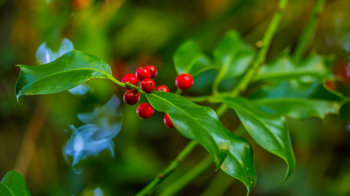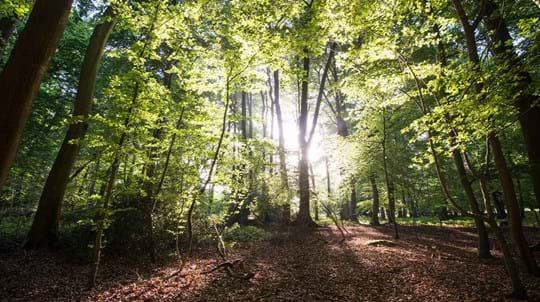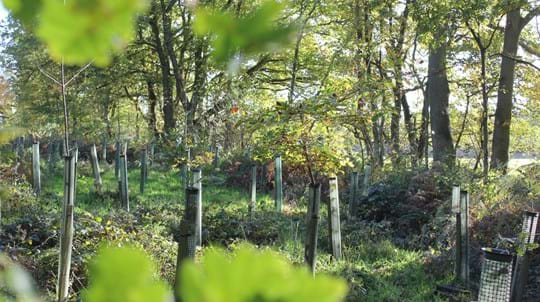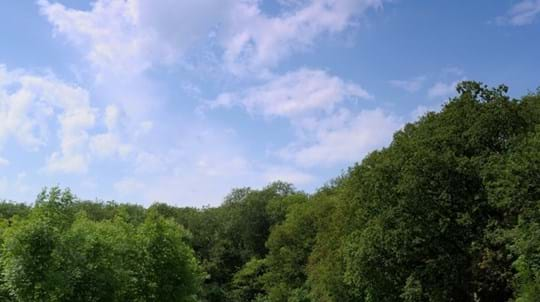
Harpsden & Peveril Woods
Harpsden

Woodland Trust wood group
- Harpsden Wood
- Peveril Wood
16.51 ha (40.80 acres)
SU760803
Explorer 171
OS Landranger 175
Harpsden and Peveril Woods is 18 hectares of ancient woodland just a stone’s throw from Henley-on-Thames.
Features
- Parking nearby
- Public access
- Broadleaved woodland
How to get to Harpsden & Peveril Woods
Harpsden and Peveril Woods lie within a Site of Special Scientific Interest, and is surrounded on three sides by similar habitats, with Henley Golf Club to the north.
To the east, the land slopes down to the River Thames floodplain. The woodland has a northerly aspect and overlooks a dry valley to the outskirts of Henley-on-Thames, which is about 3km (2 miles away).
From Henley-on-Thames head east on Queen Street Mews and turn right onto Queen Street. Continue and turn right on Station Road and left onto Reading Road (A4155). When you reach the roundabout take the second exit onto Harpsden Road and continue until you reach the village of Harpsden.
The nearest train station is in Henley-on-Thames, which connects Reading to Paddington.
Visit National Rail for more information.
The site can also be reached by bus on the Henley to Reading line (A4155).
The nearest stop is at Harpsden Turn near Sheephouse Farm. From here, it is about 0.8km (0.5 miles) walk along a country lane to reach the northeastern corner of the wood.
More information and timetables can be found on Traveline.
Facilities and access
There is informal public access on this site for local people from Henley-on-Thames and surrounding areas.
A public footpath, that heads southwest, branches off from a bridleway that is located along part of the eastern boundary. A number of permissive paths give walkers an opportunity to explore a variety of circular walks.
Please note that none of the paths are surfaced and there is no path furniture to negotiate.
Limited parking is available at a number of laybys alongside Woodlands Road.
There are three public conveniences in Henley-on-Thames at Kings Road Car Park, Greys Road Car Park and Station Road Car Park.
Wildlife and habitats
Harpsden & Peveril Woods has a wealth of mature and ancient native broadleaved trees and fallen wood which provides important habitats for animals, fungi and saproxylic species that feed on decaying wood.
Animals
The deadwood that litters the floor is an ideal habitat for a range of invertebrates including the mighty stag beetle. Look out for these impressive insects flying around on warm evenings in early summer.
Tawny owls and sparrowhawks are among the birds that call the woods home, so keep your eyes peeled and you may catch a glimpse of these stealthy predators.
Other animals found on the site include badgers, foxes and hedgehogs.
Trees, plants and fungi
The wood is dominated by mature beech, pedunculate oak, ash and sessile oak. You can also find hazel, holly, field maple, rowan and wild cherry here. Look out for scattered mature larch trees and occasional horse chestnut.
A spring visit is a must, as the 40-plus wild flowers that grow here come into full bloom. Bluebells coat large sections of the forest floor, while rarer species such as the bird’s nest orchid, green-flowered hellebore and narrow-lipped hellebore can also be found.
In late spring and summer, the golden petals of cow-wheat, yellow bird's nest and goldilocks will brighten up your walk.
If you walk up Woodland Road, you'll see steep banks which are exceptionally important for vascular plants, and also fungi which are plentiful here and on fallen deadwood within the woodland. Please take care as you explore.
Habitats
Harpsden and Peveril Woods is an ancient semi-natural broadleaved high forest dominated by beech, oak and ash.
About Harpsden & Peveril Wood
Harpsden and Peveril Woods is part of a larger complex of ancient woodland, designated a Site of Special Scientific Interest due to its diversity of plants associated with old woodland.
The Woodland Trust acquired the majority of this site, Harpsden Wood, in 1991 with the generous help of the local community. Four years later we purchased the area to the north of Woodlands Road, known as Peveril Wood. Both areas are ancient semi-natural woodland, with beech trees in Harpsden Wood likely to have been planted for the furniture industry in the 1800s.
As you walk through the woods you may spot a number of pits and hollows. These are believed to be result of historic quarrying activity.

Credit: Ben Lee / WTML
Restoration
This site has been covered by woodland since at least 1600, but it’s likely the woods are much older. In 1987 and 1990 storms created gaps in the canopy which have since started to naturally regenerate with a mix of species including ash and beech.
Things to do at Harpsden & Peveril Woods
The network of footpaths here offers a variety of circular walks to explore, making Harpsden and Peveril Woods the perfect place to spend a peaceful afternoon connecting with the natural world.
Look carefully and you’ll see evidence of historic features, including the holloway track along the bridleway and the woodbank on the northern boundary.

Visiting woods
Walking dogs in our woods
Dogs are welcome for walkies in our woods. Take a look at our tips and guidelines for ensuring we keep our woods safe and special for dogs and wildlife.
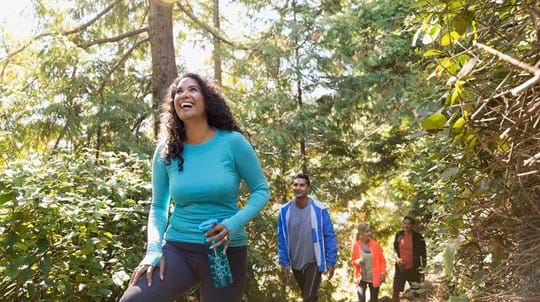
Visiting woods
Walking
Taking a walk in the woods is the easiest way to enjoy the outdoors and get closer to nature.










